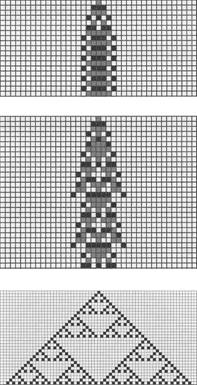Title: Health Care Systems Theory and Complexity Theory have lately,
even if quietly, come together
Health Care and Complexity
Health Care Systems Theory and Complexity Theory have lately, even if
quietly, come together.
Complex systems are complex unities formed of diverse, independent parts
subject to a common plan and or serving a common purpose, the parts
interacting with one another (1). The multiple responses of some parts to
the influences of others may lead to "Emergent Properties": A completely
new behavior of the system, utterly different from its past behavior (1).
Complex systems can arise from simple rules, and no way exists to predict
the development of Emergent Properties under given rules or from the
characteristics of the constituent parts (2).
Complex Adaptive Systems {i.e. possessing emergent behavior} can fail
over-time because of the induced changes in the system due to Emergence
(1). However, certain systems never develop Emergence. These are simple
systems exhibiting Uniformity, Repetitiveness or Nesting (3) - see Figure.
Uniformity implies no change whatsoever in the evolution of a system
within itself. Repetitiveness occurs with rules allowing a limited number
of system states. Nesting results from a tree-like branching exercise with
small elements growing larger or conversely, due to various mechanisms
rarely including constraints (4). These simple systems lacking Emergent
properties will go on "forever" without the threat of self-induced
failure.
Three methodologies influence today.s Health-Care Systems: The use of
Protocols, of Evidence Based Practice and of Diagnosis Related Groupings
{DRGs}.
Protocols embody uniformity - in Diagnosis, in logical utilization of data
and in Treatment. Adherence to a recipe is at their core.
Evidence Based Practice limits the spectrum of choices of the practitioner
leading to repetition - in diagnosis and than treatment. This may link
into protocols leading to Uniformity - but this is not mandated.
DRGs came about to help resolve the chaotic ongoing in the domains of cost
and reimbursement of Health-Care Systems. A tree-like classification
linking diagnosis and procedures to costs - organized, systematized and
simplified reimbursement. The DRGs taxonomy parallels the ongoing
branching exercise of nesting systems.
Thus, Health Care Systems have evolved on their own and within themselves
three major mechanisms which Complexity Theory recognizes as underlying
systems which are immune to Emergence and Adaptability - minimizing the
threat of failure due to a self-induced behavioral change over time. The
smoother running and stability for the longer term of Health Care Systems
including such components may augment their by now inbuilt lesser
propensity to partial market failure (5).
Samuel Penchas
Hadassah University Hospital
Mount Scopus
Jerusalem 91120
Israel
1. Trefil J. The Nature of Science. Houghton Mifflin Company 2003; 88.
2. Wolfram S. A New Kind of Science. Wolfram Media Inc. 2002; 28, 240.
3. Idem. 351-361.
4. Idem. 360-361.
5. Penchas S. Complexity in Health Care. Complexus 2003; 1:149-156

Modeling of systems by printing the output of computer programs acting out
given rules step-by-step. Each horizontal line of squares down the page is
one step forward in time ("Cellular Automata").
At the top-Uniformity, in the middle-Repetitiveness and at the
bottom-Nesting.
From {by permission}: Wolfram S. A New Kind of Science. Wolfram
Media Inc.
2002; 25, 738.
Permission by Wolfram Media Inc. for figure was granted.
|